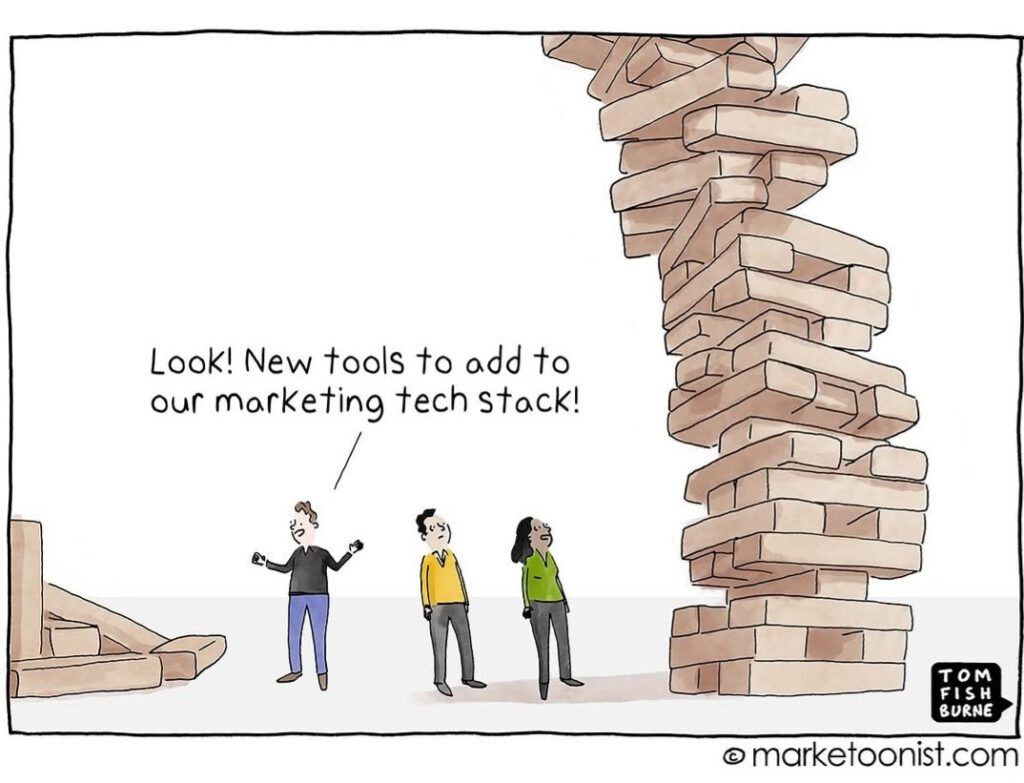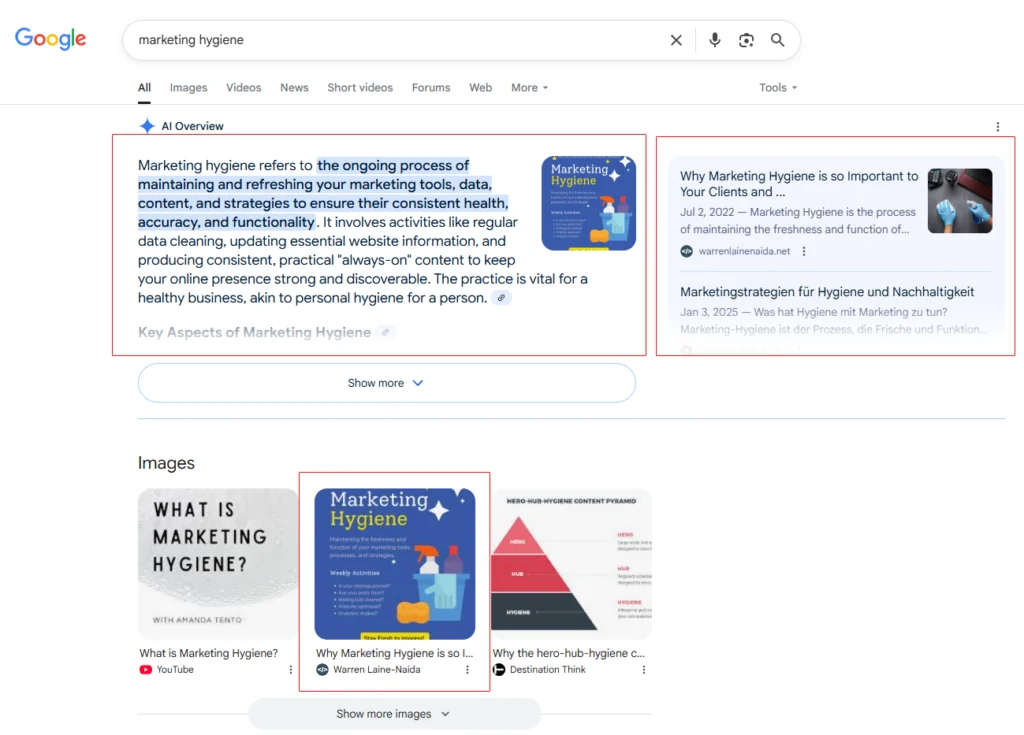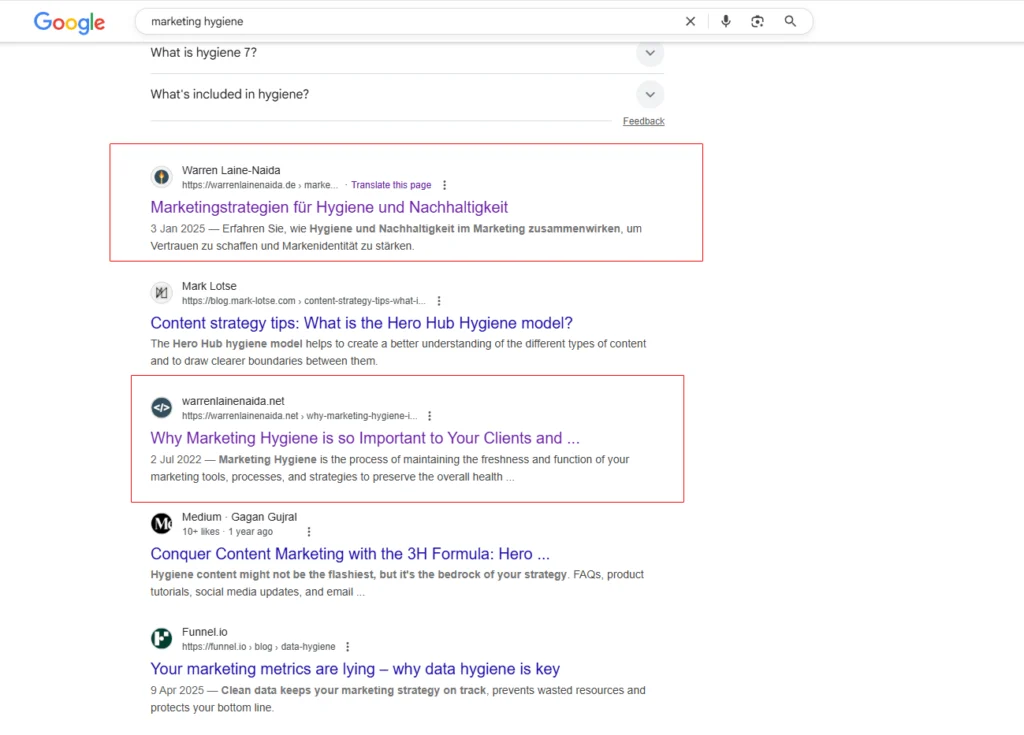Last Updated on August 19, 2025
Remember playing with building blocks as a kid? You’d stack them higher and higher, seeing how close you could get to the ceiling. Linkbuilding used to feel just like that – the more links you stacked up, the higher your website would rise in search results.
But the thing about building blocks is, if you’re not careful about which ones you choose and how you stack them, the whole tower falls down. Jenga meets SEO, right?
Are we still playing the same building game? Let’s find out.
While you might wonder, “Is linkbuilding still worth it?”, the better question is: “What valuable connections can I create today that will help real people solve real problems?” These will be the strong links of tomorrow.
Similar Articles You Might Like
How Linkbuilding Used to Work
Back in the early days of SEO (I was building websites in the early 90s), linkbuilding was like being the most popular kid in school. Our websites had “link pages” actually listed in the menu. Crazy days. The more friends you had linking to you, the cooler search engines thought you were. Every link was a vote saying “this website is worth visiting.”
The game was simple and pretty much straightforward:
- Get as many links as possible
- The more authoritative the linking site, the better
- Quantity and quality both mattered, but quantity often won
This is why SEO experts spent their days:
- Writing guest posts for anyone who would publish them
- Submitting to every directory they could find
- Reaching out to websites asking for links
It was like trading hockey cards with kids at school. When done right, this approach could turn a small website into a search engine favorite that attracted tons of visitors and customers.
“Linkbuilding used to be like collecting trading cards – the more you had, the more impressive your collection looked to everyone else.” Warren Laine-Naida
The Rules Changed While We Were Playing
But here’s what happened: while we were busy stacking our link blocks higher and higher, search engines got smarter. They stopped just counting blocks and started examining the whole structure.
If half of your cards were Bobby Orr duplicates, it wasn’t as cool as having the entire Bruins team and their team photo card, anyway. That said, you could always trade a Bobby for a few other good cards.
Today’s search engines look at much more than just how many links point to your site. They check:
- What users actually want when they search
- How good your content really is
- How well your website works for visitors – (an accessible website, is a useful website)
- Whether your links make sense and help people
- AI-powered understanding of what your content is actually about
It’s like having your dad check if your tower is actually useful, stable, and built for a real purpose, while your mum gave you points for the effort and not breaking anything when the tower collapsed.
Today’s AI Factor: With AI-powered search tools becoming more common, the game has changed again. These tools often find and recommend content based on its helpfulness and trustworthiness, rather than just the number of links it has. Quality content that truly helps people can now compete with link-heavy pages.

The Smart Way to Build Links Today
If we’re still building connections with links, we need to think like smart architects instead of speed builders. The goal has shifted from stacking as many blocks as possible to building fewer, stronger structures that actually serve a purpose.
Modern linkbuilding is less about asking lots of websites for links and more about creating content so helpful that other sites naturally want to point to it. It’s like building such a useful landmark that other websites feel they have to tell their visitors about it.
The New Approach Focuses On:
- Building real relationships with other business owners and experts
- Creating original research that becomes everyone’s go-to source
- Writing content that starts important conversations in your industry
- Making tools or resources that genuinely help lots of people
The old tricks – like buying cheap links (don’t) or using automated outreach tools (don’t do this either) – don’t just fail anymore, they can actually hurt your website. It’s like using weak blocks that crumble when tested, making your whole site look unreliable.
Should You Still Stack Those Blocks? Yes!
So, is linkbuilding still worth your time and money? Like most important questions in business, it depends on where you are and where you’re trying to go.
“The number of referring domains is one of the most important ranking factors in Google’s algorithm.” backlinko.com
→ For Busy, Competitive Markets
If you’re trying to compete in a crowded space where trust and authority matter a lot, smart linkbuilding can still give you a real advantage. It’s like trying to get noticed in a busy marketplace – quality connections help you stand out from the crowd.
What Works
- Links from well-respected industry publications
- Mentions in authoritative research and reports
- Partnerships with complementary businesses
- Speaking opportunities that lead to natural links
- Actually attending industry events!
→ For Local and Small Businesses
Links from local directories, community partners, and industry-specific websites often work really well. These focused connections are like having good neighbors who recommend you to their friends – highly relevant and genuinely helpful.
Smart Local Link Strategies
- Local chamber of commerce memberships
- Community event sponsorships
- Local news coverage and interviews
- Partnerships with other local businesses
- Local directories
→ For Brand New Websites
If you’re just starting out, working first on your website’s foundation – making it fast, easy to use, and full of helpful content – might help you more than chasing links right away.
Foundation-First Approach
- Create content that answers real questions
- Make sure your site loads fast and works well
- Focus on user experience and helpfulness
- Build your reputation through social media and community involvement
“If people can’t find you, they can’t buy from you. But if your website doesn’t help them once they arrive, those links become useless bridges to nowhere.” Warren Laine-Naida


Links Work Best as Part of the Whole Package
The most important thing to understand about modern linkbuilding is that it works best as part of a complete online strategy. Think of it as one tool in a complete toolkit that includes:
- Strong foundations (technical SEO and site performance)
- Valuable content (information people actually want and need)
- Great user experience (easy navigation and helpful design)
- Community building (social media and relationship development)
- Local presence (Google Business Profile, Bing Places, and local citations)
When all these pieces work together, linkbuilding happens more naturally because you’re building something people genuinely want to connect with and recommend.
Don’t Wait for Links – Build Direct Connections Now
While quality linkbuilding takes time to show results, you don’t have to wait for other people to discover and link to your content. You can create direct connections with your audience right now:
Social Media Leadership: Share helpful tips and insights on platforms where your ideal customers spend time. This brings immediate traffic while building your reputation as someone worth following.
Example: A fitness coach posts “3 Quick Office Stretches to Boost Energy” on LinkedIn every Monday morning, tagging relevant hashtags and engaging with commenters to drive immediate profile visits and inquiries.
Community Involvement: Join industry groups, forums, and local business organizations. Show your expertise in these spaces and linking opportunities often follow naturally.
Example: A local bakery joins a neighborhood Facebook group and actively answers questions about baking techniques, often sharing behind-the-scenes photos from their kitchen.
Content Partnerships: Work with other businesses, podcasters, or content creators in your industry. These collaborations often result in natural, valuable link exchanges.
Example: A small software company teams up with a popular productivity YouTuber to co-create a “Top 10 Time-Saving Tools” video — both share it, and each benefits from the other’s audience.
Speaking and Teaching: Offer to speak at events, join podcasts, or teach workshops. This brings immediate visibility while building long-term authority and natural links.
Example: A marketing consultant offers a free one-hour “How to Double Your Organic Leads” workshop for members of the local chamber of commerce, gaining immediate business leads and authority.
Direct Outreach: Instead of asking for links, offer to help solve problems or share valuable insights with other websites in your industry.
Example: A cybersecurity expert emails the editor of a small business blog with a custom, data-backed guide on preventing phishing attacks, offering them free use of the content to help their readers — no direct link request, but one is often included when the editor publishes it.
The Link-Building Reality Check
Let’s be honest about what linkbuilding looks like in 2025. The strategies that work require more effort but deliver better, longer-lasting results.
Focus on What Still Works
- Guest posting (but only on relevant, quality sites with engaged audiences)
- Original research and surveys (that other sites want to reference and cite)
- Resource page inclusion (when your content truly belongs there)
- Broken link building (helping sites fix problems while earning placements)
- Digital PR (earning coverage through newsworthy stories or data)
Don’t Waste Time on What Doesn’t Work
- Mass email outreach with generic templates
- Buying links from link farms or cheap services
- Reciprocal link exchanges with unrelated sites
- Directory submissions to low-quality directories
- Comment spam or forum signature links
The Effort vs. Results Reality
Quality linkbuilding takes significantly more time and effort than it used to, but the links you earn are more valuable and longer-lasting. It’s like the difference between quickly stacking cheap blocks versus carefully constructing with premium materials.
Measuring Your Link-Building Success
Numbers matter. If you’re investing in linkbuilding, you need to track the right metrics to know if it’s working.
Key Metrics to Watch
- Referral traffic from your new links (Are people actually clicking?)
- Domain authority improvements (Is your overall site strength growing?)
- Keyword ranking improvements (Are you ranking better for target terms?)
- Brand mention increases (Are more people talking about you?)
- Lead generation from referral traffic (Are links bringing qualified prospects?)
The Quarterly Link Audit: Every three months, review your new links and ask:
- Which links brought the most valuable traffic?
- What types of content earned the most natural links?
- Which outreach strategies had the best success rates?
- How did new links impact your search rankings?
This helps you focus your efforts on what actually works for your specific business and industry.
Wrapping Up: Building Bridges That Lead Somewhere
Linkbuilding isn’t dead – it just got more sophisticated. Creating valuable connections takes patience, strategy, and a focus on building something genuinely useful.
The links worth pursuing today are the ones that help people:
- connecting your expertise with those who need it,
- your solutions with people looking for answers,
- and your unique insights with communities that can benefit from them.
The goal isn’t to build the most links – it’s to build the right connections that create lasting pathways between your content and the people who need to find it.
So while you might wonder, “Is linkbuilding still worth it?”, the better question is: “What valuable connections can I create today that will help real people solve real problems?”
Start by building content and resources worth linking to, and the quality connections will follow naturally.
Your Action Steps This Week
- Audit your current backlink profile – which links bring real traffic?
- Identify 3 industry publications where your ideal customers read content
- Create one piece of original research or data that others might want to reference
- Reach out to 2 complementary businesses about potential collaboration
- Join 1 industry community where you can share helpful insights
- Set up tracking for referral traffic from your existing links
- Write one guest post pitch for a relevant, quality publication
The linkbuilding world has changed, but opportunities still exist for those willing to build real value and genuine relationships. Make sure your efforts focus on creating connections that matter.
Read More on Linkbuilding
- https://ahrefs.com/blog/link-building
- https://www.seo.com/basics/off-page-seo/link-building
- https://www.semrush.com/blog/link-building
Image courtesy of Austin Kehmeier on Unsplash